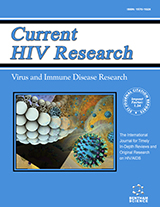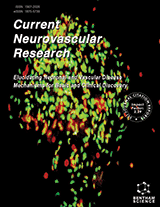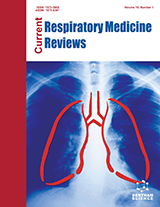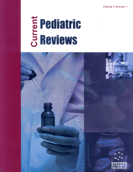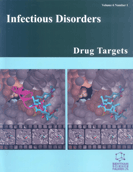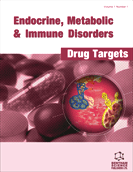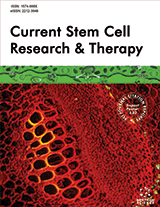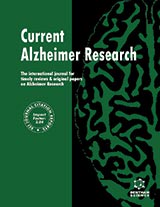Abstract
HIV-1 affects microglia and astroglia, which subsequently contributes to the neurodegenerative changes. Viral proteins cause neurotoxicity by direct action on the CNS cells or by activating glial cells to cause the release of cytokines, chemokines or neurotoxic substances. Opioid abuse has been postulated as a cofactor in the immunopathogenesis of human immunodeficiency virus (HIV) infection and AIDS. HIV-induced pathogenesis is exacerbated by opiate abuse and that the synergistic neurotoxicity is a direct effect of opiates on the CNS. Chemokines and their receptors have been implicated in the pathogenesis of neuroAIDS. Herein we describe the effects of morphine and/or gp120 on the expression of the genes for the βchemokine MIP-1β and its receptors CCR3 and CCR5 by the U373 cells which are a human brain-derived astrocytoma/glioblastoma cell line. Our results indicate that treatment of U373 cells with morphine significantly downregulated the gene expression of the β chemokine, MIPβ1 β, while reciprocally upregulating the expression of its specific receptors, CCR3 and CCR5 suggesting that the capacity of mu-opioids to increase HIV-1 co-receptor expression may promote viral binding, trafficking of HIV-1-infected cells, and enhanced disease progression. Additionally, opiates can enhance the cytotoxicity of HIV-1 viral protein gp120 via mechanisms that involve intracellular calcium modulation resulting in direct actions on astroglia, making them an important cellular target for HIV-opiate interactions.
Keywords: morphine, astroglia, hiv, gp, chemokines
Current HIV Research
Title: Morphine Exacerbates HIV-1 Viral Protein gp120 Induced Modulation of Chemokine Gene Expression in U373 Astrocytoma Cells
Volume: 3 Issue: 3
Author(s): Supriya D. Mahajan, Ravikumar Aalinkeel, Jessica L. Reynolds, Bindukumar B. Nair, Stanley F. Fernandez, Stanley A. Schwartz and Madhavan P.N. Nair
Affiliation:
Keywords: morphine, astroglia, hiv, gp, chemokines
Abstract: HIV-1 affects microglia and astroglia, which subsequently contributes to the neurodegenerative changes. Viral proteins cause neurotoxicity by direct action on the CNS cells or by activating glial cells to cause the release of cytokines, chemokines or neurotoxic substances. Opioid abuse has been postulated as a cofactor in the immunopathogenesis of human immunodeficiency virus (HIV) infection and AIDS. HIV-induced pathogenesis is exacerbated by opiate abuse and that the synergistic neurotoxicity is a direct effect of opiates on the CNS. Chemokines and their receptors have been implicated in the pathogenesis of neuroAIDS. Herein we describe the effects of morphine and/or gp120 on the expression of the genes for the βchemokine MIP-1β and its receptors CCR3 and CCR5 by the U373 cells which are a human brain-derived astrocytoma/glioblastoma cell line. Our results indicate that treatment of U373 cells with morphine significantly downregulated the gene expression of the β chemokine, MIPβ1 β, while reciprocally upregulating the expression of its specific receptors, CCR3 and CCR5 suggesting that the capacity of mu-opioids to increase HIV-1 co-receptor expression may promote viral binding, trafficking of HIV-1-infected cells, and enhanced disease progression. Additionally, opiates can enhance the cytotoxicity of HIV-1 viral protein gp120 via mechanisms that involve intracellular calcium modulation resulting in direct actions on astroglia, making them an important cellular target for HIV-opiate interactions.
Export Options
About this article
Cite this article as:
Mahajan D. Supriya, Aalinkeel Ravikumar, Reynolds L. Jessica, Nair B. Bindukumar, Fernandez F. Stanley, Schwartz A. Stanley and Nair P.N. Madhavan, Morphine Exacerbates HIV-1 Viral Protein gp120 Induced Modulation of Chemokine Gene Expression in U373 Astrocytoma Cells, Current HIV Research 2005; 3 (3) . https://dx.doi.org/10.2174/1570162054368048
| DOI https://dx.doi.org/10.2174/1570162054368048 |
Print ISSN 1570-162X |
| Publisher Name Bentham Science Publisher |
Online ISSN 1873-4251 |
 3
3
- Author Guidelines
- Bentham Author Support Services (BASS)
- Graphical Abstracts
- Fabricating and Stating False Information
- Research Misconduct
- Post Publication Discussions and Corrections
- Publishing Ethics and Rectitude
- Increase Visibility of Your Article
- Archiving Policies
- Peer Review Workflow
- Order Your Article Before Print
- Promote Your Article
- Manuscript Transfer Facility
- Editorial Policies
- Allegations from Whistleblowers
Related Articles
-
Tumor Invasion and Oxidative Stress: Biomarkers and Therapeutic Strategies
Current Molecular Medicine Rheumatoid Arthritis, Immunosenescence and the Hallmarks of Aging
Current Aging Science Computational Studies Applied to Anti-inflammatory Drug Discovery: A Review
Current Organic Chemistry Generation of Pharmacophore and Atom Based 3D-QSAR Model of Novel Isoquinolin-1-one and Quinazolin-4-one-type Inhibitors of TNFα
Medicinal Chemistry Purification and Partial Characterization of a New Pro-Inflammatory Lectin from Bauhinia bauhinioides Mart (Caesalpinoideae) Seeds
Protein & Peptide Letters Association between Antiretroviral Treatment and Markers of Systemic Inflammation among HIV Patients in Ghana
Current HIV Research Medicinal Chemistry of Indolylglyoxylamide TSPO High Affinity Ligands with Anxiolytic-Like Effects
Current Topics in Medicinal Chemistry Radiolabeled Nanoparticles for Cancer Diagnosis and Therapy
Anti-Cancer Agents in Medicinal Chemistry Functional, Genetic and Biochemical Biomarkers of Peripheral Arterial Disease
Current Medicinal Chemistry Human Wharton's Jelly Mesenchymal Stem Cells Maintain the Expression of Key Immunomodulatory Molecules When Subjected to Osteogenic, Adipogenic and Chondrogenic Differentiation In Vitro: New Perspectives for Cellular Therapy
Current Stem Cell Research & Therapy Recovery of Sense of Smell by Mepolizumab in a Patient with Chronic Rhinosinusitis and Nasal Polyposis
New Emirates Medical Journal Editorial Nutritional Therapy in Metabolic Syndrome
Current Vascular Pharmacology Mesenchymal Stem Cell Research in Veterinary Medicine
Current Stem Cell Research & Therapy Advances in Biologic Agents for the Treatment of Rheumatoid Arthritis
Anti-Inflammatory & Anti-Allergy Agents in Medicinal Chemistry Challenges in the Management of Paediatric Febrile Neutropenia
Current Pediatric Reviews Th17 Cells in Airway Diseases
Current Molecular Medicine Novel Anti-Cancer Strategy in Bone Tumors by Targeting Molecular and Cellular Modulators of Bone Resorption
Recent Patents on Anti-Cancer Drug Discovery Psychotropic Medications and the Treatment of Human Prion Diseases
CNS & Neurological Disorders - Drug Targets The Expression, Function and Targeting of Haem Oxygenase-1 in Cancer
Current Cancer Drug Targets ADAM10 as a Therapeutic Target for Cancer and Inflammation
Current Pharmaceutical Design


